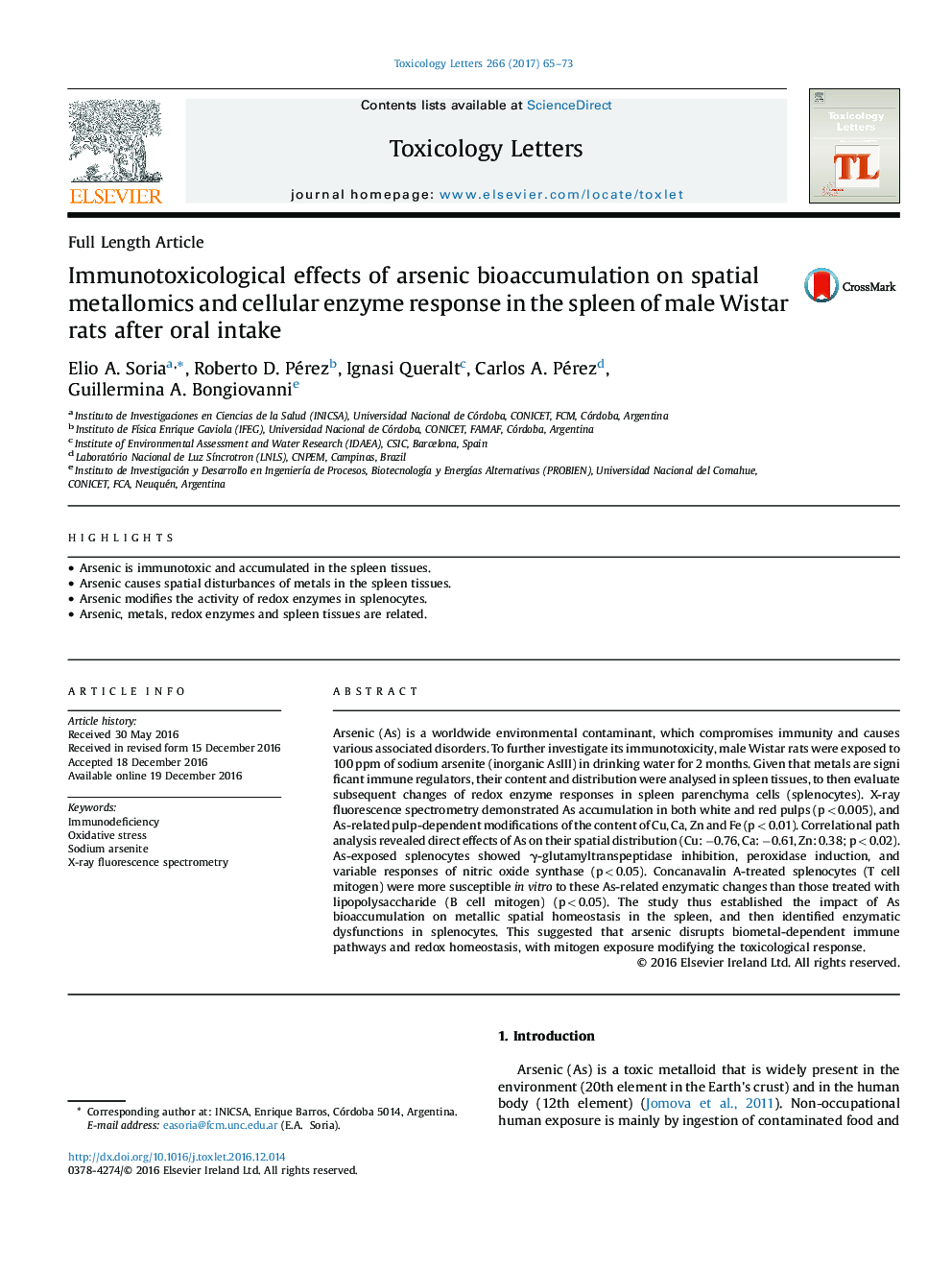| Article ID | Journal | Published Year | Pages | File Type |
|---|---|---|---|---|
| 5562203 | Toxicology Letters | 2017 | 9 Pages |
Abstract
Arsenic (As) is a worldwide environmental contaminant, which compromises immunity and causes various associated disorders. To further investigate its immunotoxicity, male Wistar rats were exposed to 100 ppm of sodium arsenite (inorganic AsIII) in drinking water for 2 months. Given that metals are significant immune regulators, their content and distribution were analysed in spleen tissues, to then evaluate subsequent changes of redox enzyme responses in spleen parenchyma cells (splenocytes). X-ray fluorescence spectrometry demonstrated As accumulation in both white and red pulps (p < 0.005), and As-related pulp-dependent modifications of the content of Cu, Ca, Zn and Fe (p < 0.01). Correlational path analysis revealed direct effects of As on their spatial distribution (Cu: â0.76, Ca: â0.61, Zn: 0.38; p < 0.02). As-exposed splenocytes showed É£-glutamyltranspeptidase inhibition, peroxidase induction, and variable responses of nitric oxide synthase (p < 0.05). Concanavalin A-treated splenocytes (T cell mitogen) were more susceptible in vitro to these As-related enzymatic changes than those treated with lipopolysaccharide (B cell mitogen) (p < 0.05). The study thus established the impact of As bioaccumulation on metallic spatial homeostasis in the spleen, and then identified enzymatic dysfunctions in splenocytes. This suggested that arsenic disrupts biometal-dependent immune pathways and redox homeostasis, with mitogen exposure modifying the toxicological response.
Related Topics
Life Sciences
Environmental Science
Health, Toxicology and Mutagenesis
Authors
Elio A. Soria, Roberto D. Pérez, Ignasi Queralt, Carlos A. Pérez, Guillermina A. Bongiovanni,
